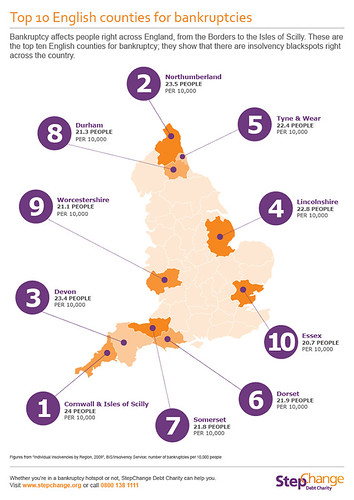If you have had any of your possessions repossessed by the IRS, personal bankruptcy may be an option for you. Although bankruptcy tends to destroy a person’s credit, it’s occasionally the only available option. Keep reading to gain a better understanding of the bankruptcy process and of the ramifications of initiating a filing.
Be sure everything is clear to you about personal bankruptcy via looking at websites on the subject. The U.S. There is solid advice available from the NACBA, (Consumer Bankruptcy Attorneys’ association) the ABI, (American Bankruptcy Institute) and the United States Department of Justice. The more you know, you can be confident you are choosing the right thing and that you are taking the right road to make sure your bankruptcy proceeds as easily as possible.
Be sure to bring anything up repeatedly if you are unsure if your lawyer is focusing on it. You should not take for granted that your lawyer will remember every important detail that you have have told him earlier without a reminder. All information submitted to the court with your signature needs to be double checked.
Prior to filing for bankruptcy, discover which assets cannot be seized. There are some assets that cannot be seized through bankruptcy, and the law lists those assets. Make sure to review the list before filing a claim so you know if your valuables will be subject to seizure. If you don’t read it, you could have nasty surprises pop up later due to your prized possessions being seized.
Be aware of recent changes, if any, in the bankruptcy code. Bankruptcy laws are in constant flux, so just because you knew the law last year doesn’t mean that the laws will be the same this year. All of these changes will be addressed on the state’s legislative site. You can also contact them directly by phone or office visit.
Learn the differences between Chapter 7 and Chapter 13 bankruptcies. All debt will be eliminated with Chapter 7. This includes creditors and your relationship with them will become no longer existent. A Chapter 13 filing involves a repayment plan, though. Typically, you will make a partial payment against your debts over the next 60 months before the balance of the debts is lifted. You have to know what differs between all of the kind of bankruptcy, so you know which is one is ideal for you.
In conclusion, the option of bankruptcy is always there. But, because of the effect it has on one’s credit, it shouldn’t be the first choice. As long as you’re properly informed about which moves to take and when, you should have little trouble navigating the process and ultimately restructuring your credit.
